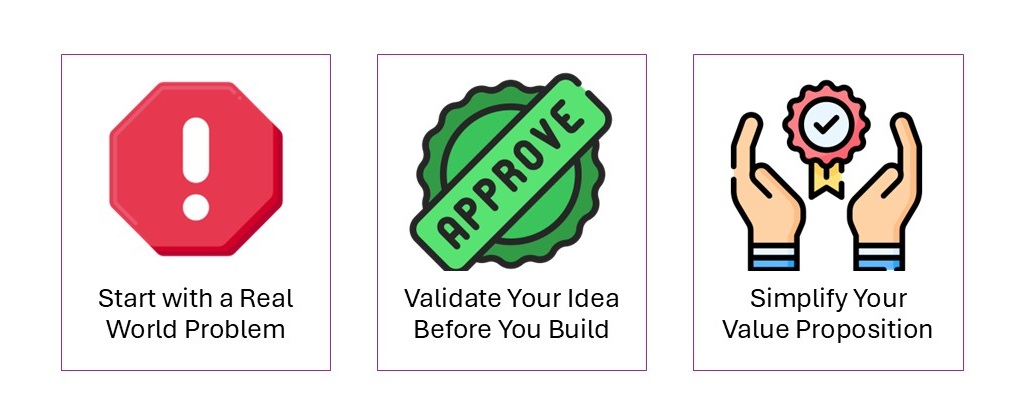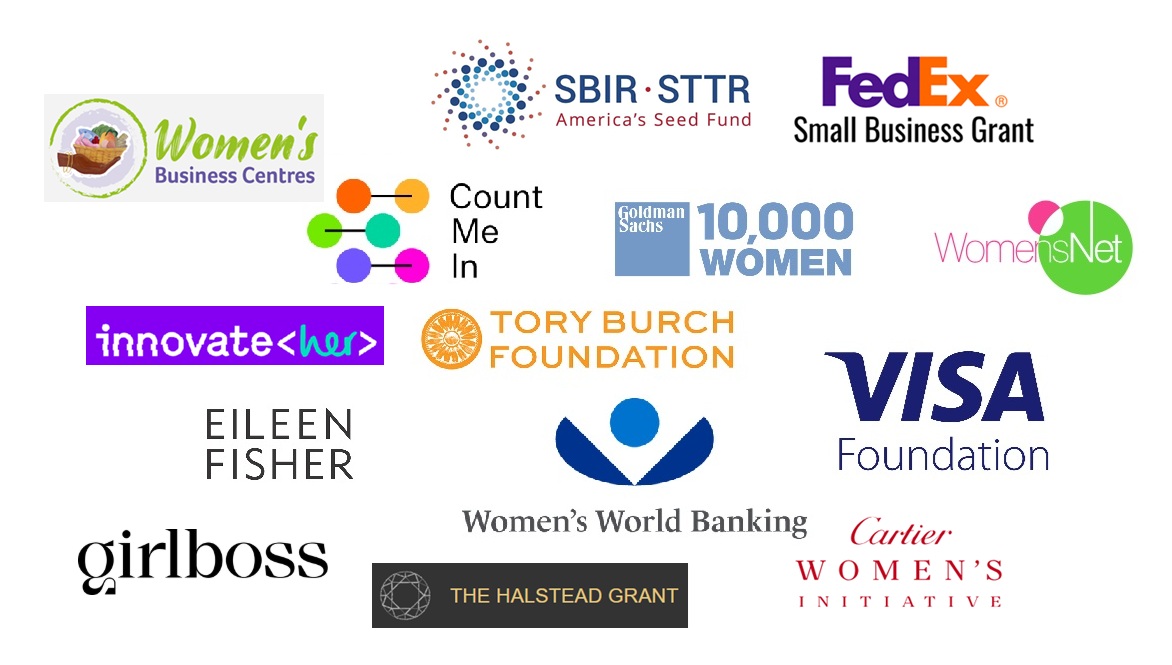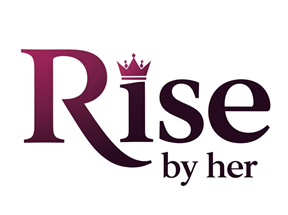In the past decade, we’ve witnessed a powerful shift, more women than ever are stepping into STEM fields, and many are taking the leap into entrepreneurship. From biotech breakthroughs to AI-powered apps, women in science, technology, engineering, and math are no longer just contributing to innovation, they’re leading it.
But while STEM knowledge is a huge advantage, turning those big ideas into a successful startup still comes with unique challenges. Many brilliant women in tech and science have the expertise, but wonder: Where do I start? How do women in STEM start businesses without a business degree? If that’s you, you’re in the right place.
This guide is designed specifically for female tech founders and aspiring innovators in STEM who want to launch something of their own. Whether you’re an engineer with a solution to a real-world problem or a researcher with a product idea, we’ll walk you through the steps to turn your vision into a profitable venture, with practical tips, proven strategies, and real examples.
Ready to build something that matters? Let’s get started.
Why Women in STEM Excel at Launching Profitable Startups
Women in STEM bring a unique edge to entrepreneurship, one that blends technical expertise with creative problem-solving and analytical precision. When it comes to launching a successful startup, these qualities are not just helpful, they’re essential.
Analytical Thinking Meets Real-World Innovation
Engineers, scientists, coders, and mathematicians are trained to approach challenges methodically. This makes women in STEM particularly skilled at identifying problems, developing data-driven solutions, and iterating quickly, all of which are crucial in the early stages of startup development.
Whether it’s designing a new medical device, building an edtech app, or creating sustainable energy solutions, the advantages of women in STEM for entrepreneurship lie in their ability to think critically, test hypotheses, and solve complex problems, often in groundbreaking ways.
From the Lab to the Boardroom: Real Examples
Just look at women like:
- Dr. Lisa Dyson, a physicist who founded Air Protein, a company using space-age technology to create protein from carbon dioxide.
- Shradha Agarwal, who turned her background in neuroscience into ContextMedia (now Outcome Health), a health tech company valued at over $5 billion.
- Reshma Saujani, who started Girls Who Code, combining tech skills with a mission-driven startup model that’s made a global impact.
These women (and many more) prove that female engineers starting businesses can not only compete but lead the charge in innovation.
Breaking the Mold in Male-Dominated Fields
Let’s face it, tech and STEM industries have long been male-dominated. But the narrative is changing. Women in STEM who enter the startup space aren’t just building companies; they’re breaking barriers, challenging norms, and paving the way for the next generation of diverse founders.
Starting a business as a woman in STEM is about more than just profits. It’s about representation, impact, and proving that innovation knows no gender.
How to Turn a STEM Idea into a Startup Concept
You’ve got the expertise. You’ve got the idea. But how do you turn that knowledge into something people will actually pay for? The journey from concept to startup starts with solving a real problem and validating that solution in the real world.

Start with a Real-World Problem
The most successful startups begin by tackling real, unmet needs. As a woman in STEM, your technical background gives you a unique lens to see problems others overlook — whether it’s inefficiencies in healthcare, gaps in clean energy solutions, or opportunities in AI-driven tools.
Ask yourself:
- What problem do I see in my industry or community that hasn’t been solved effectively?
- Is there a process I could improve with a tech-based solution?
- Can my research or prototype be applied to real-world use cases?
This is where turning scientific research into a business begins, by bridging the gap between theory and action.
Validate Your Idea Before You Build
Before you dive into creating a product, it’s crucial to validate your idea. That means talking to potential users, getting feedback, and doing your homework on the competition.
Steps to validate your startup idea in STEM:
- Conduct user interviews (even informally)
- Launch a simple survey to your target audience
- Analyze existing solutions and identify what’s missing
- Build a quick prototype or landing page and track interest
This phase helps you avoid building something no one needs, a common pitfall for first-time founders. If you’re asking, how to validate a startup idea in STEM? start small, test fast, and iterate based on what your audience actually wants.
Simplify Your Value Proposition
Once you’ve validated your idea, distill it into a clear and compelling value proposition. It should answer this question: Why would someone choose your solution over everything else?
Here’s a simple formula to help: “We help [specific audience] solve [specific problem] with [your solution].”
For example: “We help women researchers streamline lab data with our AI-powered analytics tool.”
This clarity is not only vital for attracting users, but also for pitching investors, team members, and partners down the line.
Building your Startup Foundation
Once your idea is validated, it’s time to lay the groundwork. This is where your startup starts to take shape and having a clear structure will set you up for long-term success. Whether you’re launching a biotech solution, a SaaS platform, or a tech consulting service, this stage is all about smart planning and strategic tools.
How to Write a Business Plan (Tailored for Women in STEM)
Creating a business plan might sound intimidating, but it doesn’t need to be. Think of it as your startup’s roadmap, helping you define your vision, understand your market, and plan how you’ll make money.

Here’s what a startup business plan for women in STEM should include:
- Problem + Solution: What problem are you solving and how?
- Market Analysis: Who’s your audience? What are their needs?
- Product Overview: What are you building? How will it work?
- Revenue Model: How will you generate income?
- Growth Plan: What’s your vision for scaling?
- Team + Skills: Who’s involved and what expertise do you bring?
- Funding Needs (if applicable): How much will it cost to launch?
Highlight your STEM background as a unique asset in your plan. Investors love founders who understand the tech and science behind their product.
Choosing Your Startup Model
Not all startups are built the same. The right model depends on your idea, your resources, and your goals. Here are a few common options:
- Product-based (physical or digital): Great for inventors and engineers
- Service-based: Ideal if your expertise can be packaged (e.g., consulting or training)
- SaaS (Software as a Service): Perfect for coders and tech founders building scalable platforms
- Marketplace or Platform: Good for connecting users (e.g., job boards, peer services)
Evaluate your skillset, target audience, and long-term vision when choosing the structure.
Tools and Platforms to Build Your MVP
Your Minimum Viable Product (MVP) is the most basic version of your solution that solves the core problem. You don’t need a full-blown app or polished product — just something testable.
Here are some of the best startup tools for female tech founders:
- No-code builders: Webflow, Bubble, or Glide for fast MVPs
- Prototyping: Figma for wireframes or design mockups
- Developer-friendly platforms: GitHub, Firebase, Vercel for building and hosting tech projects
- Collaboration tools: Notion, Trello, Slack
These tools help you move quickly and efficiently without needing a big team or a big budget.
Funding Options for Women in STEM Startups
You’ve got the vision. You’ve built the foundation. Now, how do you get the money to bring it to life? Funding is one of the biggest hurdles for new founders, but women in STEM have more options than ever in 2025. From government support to investor backing, there are real paths to secure the capital you need to grow.

Government Grants & Women-Only Accelerators
One of the most accessible ways to get startup funding for women in STEM is through grants, especially those designed to close the gender gap in innovation and tech.
Look into:
- STTR/SBIR programs (in the U.S.) that fund tech-driven research
- Women in Innovation initiatives (offered in many countries)
- Local or university-affiliated grants for science and entrepreneurship
In addition, women-focused accelerators and incubators are growing fast. These programs offer mentorship, networking, and early-stage funding. Some top names include:
- SheEO
- Female Founders Alliance
- Women Who Tech Startup Grant
- Techstars Women Founders Program
Microloans, Angel Investors & Crowdfunding
If you’re not ready for venture capital, or want to keep control early on, consider alternative funding routes:
- Microloans: Organizations like Kiva, Grameen America, or local women’s business centers offer small loans with flexible terms ideal for early-stage product development or prototyping.
- Angel Investors: These are individuals who invest in promising startups and many specifically back female tech entrepreneurs.
- Crowdfunding: Launching a campaign on platforms like Kickstarter, Indiegogo, or IFundWomen can help raise capital while validating your product idea publicly.
These options are especially powerful if you’re still building traction or pre-revenue.
How to Pitch as a First-Time Founder
Pitching your startup can be nerve-wracking, especially if you’re new to business. But your STEM background is a strength. Investors love logic, data, and innovation.
Here’s how to stand out:
- Lead with the problem you’re solving and why it matters
- Show your credibility: Your education, research, or experience
- Focus on impact and scalability: Investors want to see big potential
- Practice your pitch with mentors, peers, or even recorded on your phone
- Be confident in your uniqueness: You’re not just another founder; you’re a woman innovating in STEM. That’s powerful.
Building a Support Network and Mentorship
No founder succeeds alone, and for women in STEM turning their ideas into startups, having the right support system can make or break the journey. Whether it’s connecting with a mentor, joining a startup group, or finding a co-founder who shares your vision, community is everything.
Finding STEM Startup Communities (Online & Local)
The first step? Surround yourself with people who get it. Look for women in STEM support groups for startups that offer resources, advice, and accountability.
Some great places to start:
- Techstars Community Programs: Local chapters and global events
- Startup Grind Women in Tech: Founder-friendly events and content
- Women Who Code and Girl Geek X: Perfect for female devs and engineers
- LinkedIn Groups or Slack communities like Elpha, Indie Hackers, or Women 2.0
Don’t underestimate the power of local meetups, coworking spaces, or university startup incubators. Many have special tracks for women in STEM or tech founders.
Mentorship Programs for Female Entrepreneurs
A great mentor can fast-track your growth, help you avoid rookie mistakes, and open doors you didn’t know existed.
Top mentorship programs for female entrepreneurs include:
- The Cartier Women’s Initiative
- TechWomen (U.S. State Department)
- WISE (Women in STEM Entrepreneurship)
- Google for Startups Women Founders
Look for mentors who:
- Understand the startup space
- Have STEM or industry-specific experience
- Believe in your mission and push you to grow
Collaborating with Co-Founders & Building Your Team
Some of the best startups are built by co-founders with complementary skills. If your strength is tech, find someone great at business or marketing, or vice versa.
Here’s how to find the right people:
- Attend startup or STEM networking events
- Post in communities like CoFoundersLab, AngelList, or Y Combinator’s co-founder matching
- Ask around in your university, lab, or professional network
Early hires and co-founders should:
- Share your passion
- Balance your weaknesses
- Commit to the Long Game
Your team is your startup’s backbone. Choose wisely, lead boldly, and build a culture where innovation thrives.
Scaling Your Startup
Once your product is live and your foundation is strong, it’s time to move beyond survival and start growing. Scaling your startup means attracting more customers, optimizing systems, and making strategic moves to turn your idea into a thriving business.
This phase is where many founders stumble, but you’ve got a secret weapon: your STEM mindset. Now let’s use it.
Setting Up Marketing and Growth Strategies
To scale, people need to find you and more importantly, trust you. That’s where marketing comes in.
Effective growth strategies for women-led tech startups include:
- Content marketing: Share your knowledge via blog posts, videos, or tutorials. STEM startups thrive on thought leadership.
- Social proof: Highlight testimonials, early reviews, or case studies from users or beta testers.
- Referral programs: Encourage early customers to spread the word.
- Email marketing: Build relationships and nurture leads with valuable updates, not just promotions.
For paid strategies, platforms like Google Ads or LinkedIn work well for niche STEM audiences.
And don’t forget SEO! Optimize your site for keywords your target market is actually searching for “AI tools for small businesses” or “eco-friendly engineering solutions.”
Building Partnerships & Reaching Customers
Strategic partnerships can accelerate your growth in a big way. Here’s how to think about it:
- Partner with other startups: Bundle services, share audiences, or co-host webinars.
- Collaborate with universities or labs: Especially if your product has a research or technical angle.
- Pitch to enterprise clients: If your solution solves a specific pain point in healthcare, finance, education, or manufacturing, go straight to the decision-makers.
Startups led by women in tech often bring fresh perspectives, don’t be afraid to stand out.
And remember: Your customers are your best marketers. Make your onboarding seamless, your product useful, and your support excellent. Word-of-mouth is still gold.
Using Data to Make Informed Business Decisions
This is where your STEM background truly shines. Use data to drive every key decision.
- Track KPIs: Revenue, churn rate, customer acquisition cost, and lifetime value.
- Use analytics: Tools like Google Analytics, Hotjar, or Mixpanel to understand user behavior.
- A/B test constantly: Headlines, landing pages, pricing: test, tweak, repeat.
Being data-driven means you’re not guessing; you’re growing intelligently.
Whether you’re scaling a SaaS product or a science-based service, lean into your strengths: logic, experimentation, and precision. It’s what makes women in STEM some of the smartest founders out there.
Conclusion & Encouragement
Starting a tech business as a woman in STEM is more than just a smart career move, it’s a step toward reshaping the future. Yes, it can feel intimidating, especially if you’re the only woman in the room. But you’re not just capable, you’re uniquely qualified.
Common Challenges and How to Overcome Them
Women in STEM often face:
- Imposter syndrome: You’re not alone doubting your value, but your skills and vision are valid.
- Funding gaps: Female tech founders receive less venture capital, but more grants, women-focused accelerators, and angel networks are changing that.
- Representation: You may not see many people like you in leadership, yet. That’s why your presence matters.
Mindset Shift: Scientist to Entrepreneur
STEM skills translate beautifully into business. You are already:
- Solve problems
- Think in systems
- Test and adapt
The key is to apply these talents to market needs and customer feedback. Start thinking like a founder: agile, user-focused, and growth-driven.
Take the Leap – Even If You’re the First
You might be the only woman at the table now, but every step you take opens doors for others. Whether you’re building a SaaS product, launching a biotech tool, or starting a tech service, you’re building more than a business: you’re building a movement.
So go for it. Pitch the idea. Apply for funding. Join that accelerator.
You already have what it takes. Now, build what the world needs.
If this guide sparked an idea or gave you the confidence to take your next step, don’t stop here, let’s keep growing together.
Subscribe to get more step-by-step guides, real stories of women in tech, and exclusive startup tips, straight to your inbox.



[…] ten female startup founders in STEM are proving that deep tech knowledge, scientific thinking, and entrepreneurial spirit are a […]